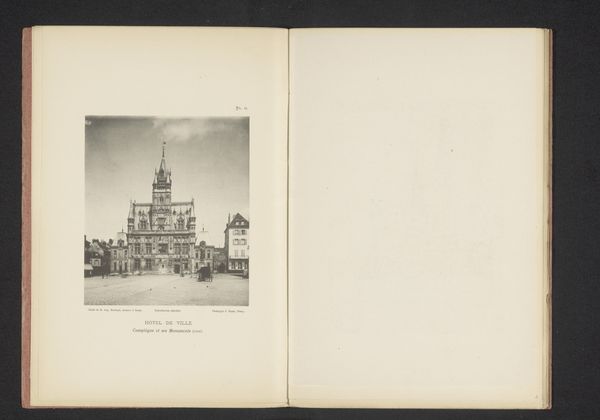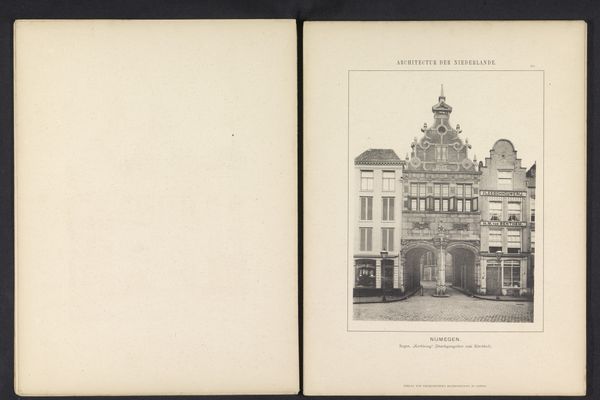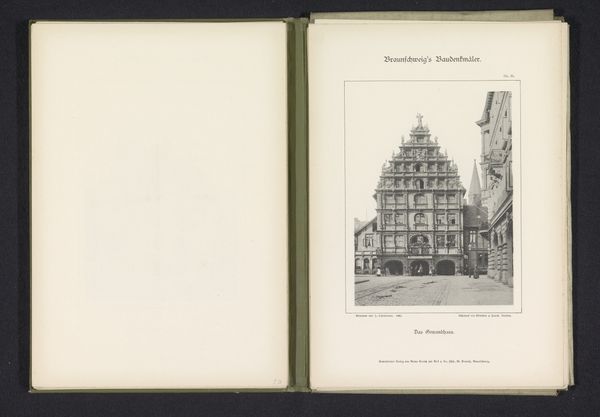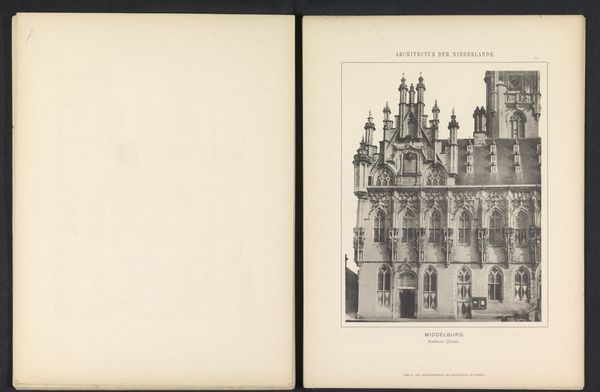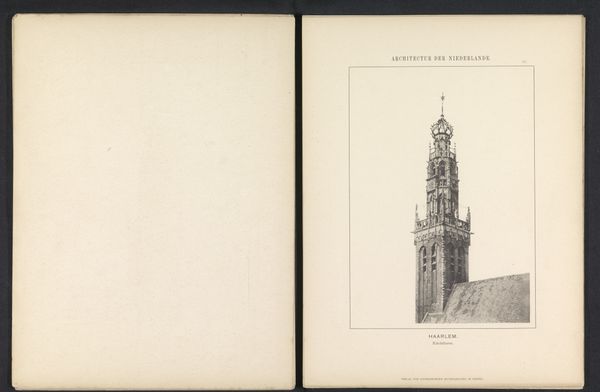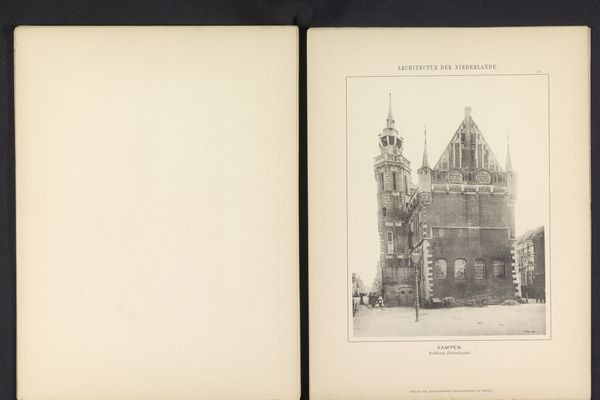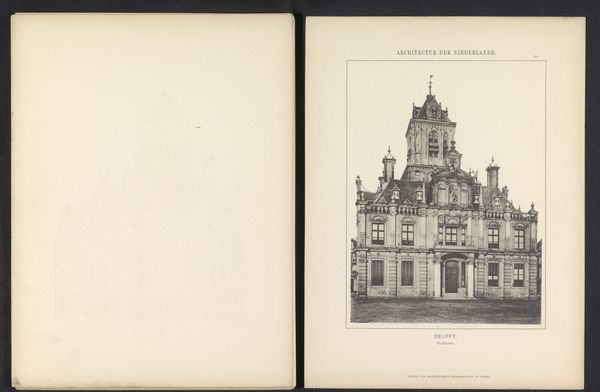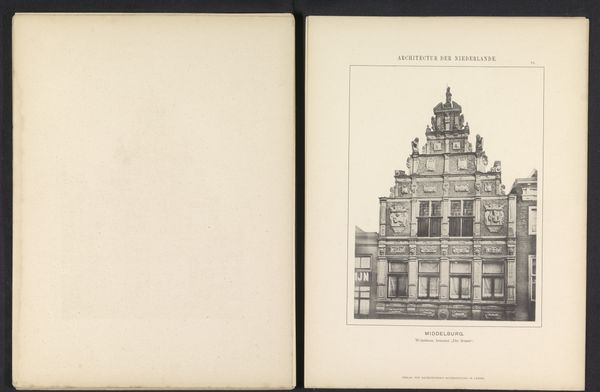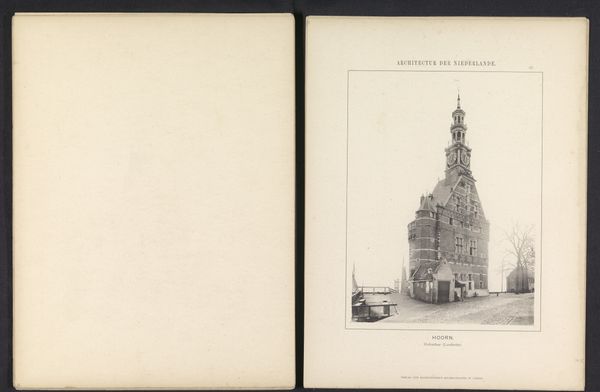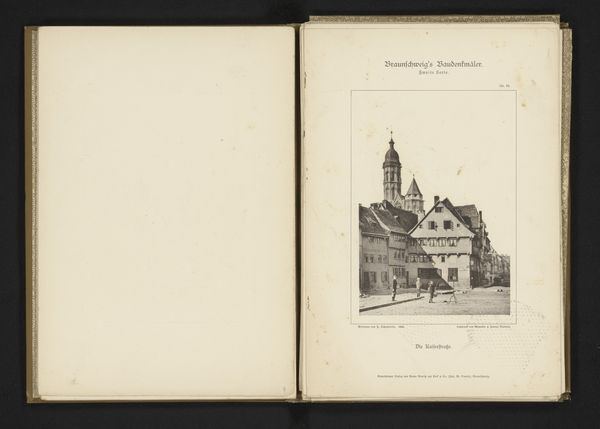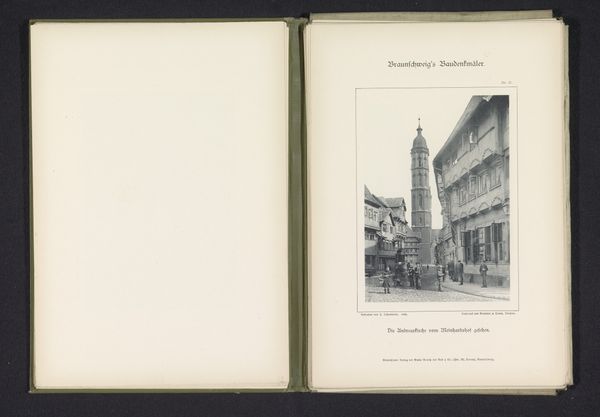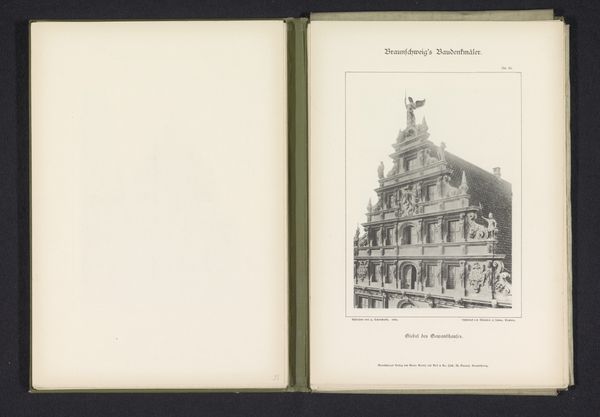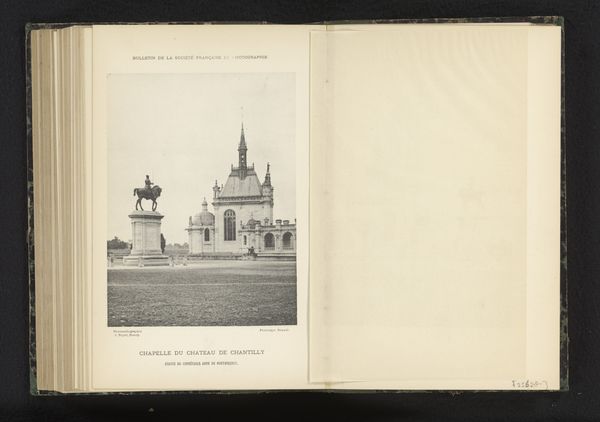
Dimensions: height 253 mm, width 190 mm
Copyright: Rijks Museum: Open Domain
Curator: Before us is an etching titled "Gezicht op de Waag in Deventer," predating 1894. It’s currently held at the Rijksmuseum. Editor: My first impression is one of rather imposing solemnity. The building seems to dominate the frame. It's monumental, even in this small print. Curator: It depicts the Waag, the weigh house, in Deventer. During the Dutch Golden Age, buildings like these were central to the social and economic fabric of the city. They represented civic authority and mercantile power, very visibly regulating trade. Editor: Indeed. And the image itself seems almost idealized. It is rendered with remarkable clarity. It almost reminds me of a stage set. Is it an assertion of Dutch exceptionalism? Considering its place in the "Architectuur der Nederlande" it appears to reinforce notions of architectural grandeur as an expression of power. Who exactly was this image for, and what statements about Dutch society was it making? Curator: It served both a practical and symbolic function. The weight house, obviously essential for commerce. Also the style -- romanticism blending into realism-- presents this place as powerful, as permanent, as important for commerce but equally so to history. We should also note how art often subtly upheld the established social order. Prints such as these were affordable ways to distribute this civic power to broader audiences. Editor: I agree. And who controlled access to and interpretation of the work? Considering the social and political ramifications connected to places of commerce during that time, how might we connect gender, or race, to this structure? How was labor and the role of enslaved peoples represented—or absent— from these idyllic renderings? Curator: Exactly. The Dutch Golden Age benefited profoundly from exploitative colonial practices. While this etching focuses on architectural splendor, it's vital that we interrogate whose labor, literally and figuratively, undergirded that splendor. It really urges a careful examination of both presence and absence, right? Editor: It certainly does. Viewing art from a purely aesthetic standpoint can be blinding. Historical context illuminates crucial aspects of the cultural narrative. Thank you. Curator: Likewise. Seeing a work of art anew and thinking about its impact adds layers to the way we think about these art objects.
Comments
No comments
Be the first to comment and join the conversation on the ultimate creative platform.
